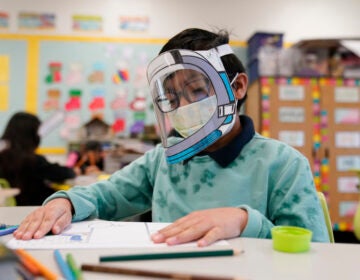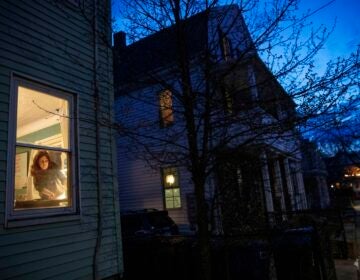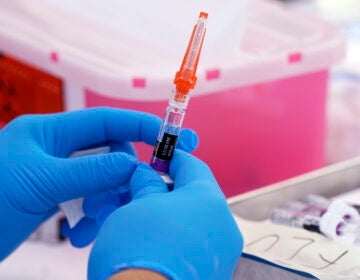Public health experts say many states are opening too soon to do so safely
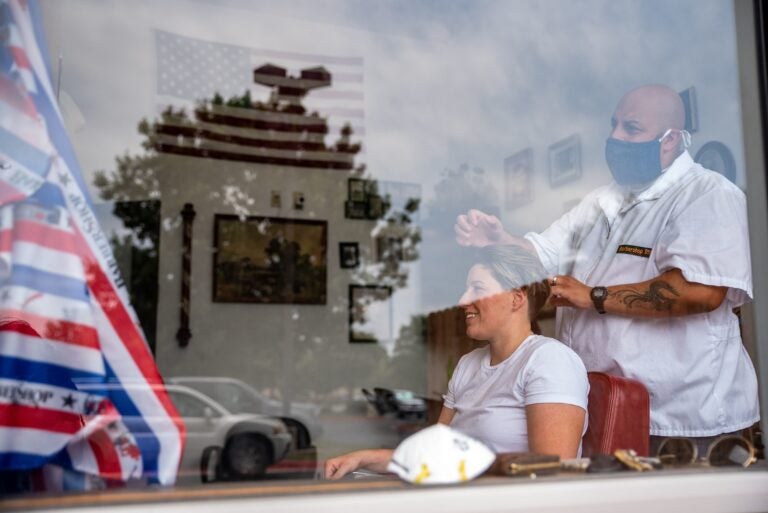
A woman gets a haircut on Friday in Round Rock, Texas, as the state slowly reopens from its pandemic shutdown. (Sergio Flores/AFP/Getty Images)
As of Friday in Texas, you can go to a tanning salon. In Indiana, houses of worship are being allowed to open with no cap on attendance. Places like Pennsylvania are taking a more cautious approach, only starting to ease restrictions in some counties based on the number of COVID-19 cases.
By Monday, at least 31 states will have partially reopened after seven weeks of restrictions. The moves come as President Trump pushes for the country to get back to work despite public health experts warning that it’s too soon.
“The early lesson that was learned, really, we learned from the island of Hokkaido in Japan, where they did a really good job of controlling the initial phase of the outbreak,” said Bob Bednarczyk, assistant professor of global health and epidemiology at the Rollins School of Public Health at Emory University in Atlanta.
Because of that success, many of the restrictions on the island were lifted. But cases and deaths surged in a second wave of infections. Twenty-six days later, the island was back on lockdown.
“That’s the concern that we have right now,” he said.
Bednarczyk is closely following the data from Georgia’s Department of Public Health. For two weeks now, the state has allowed a lot of businesses to open, businesses that include close-contact activities like a haircut or a manicure. And Bednarczyk said the numbers he’s looking at show the state hasn’t had a sustained decrease in cases.
“We’ve done a pretty good job in controlling that exponential growth that we saw early on,” he said. “But the way that it looks to many of us is that we really haven’t reached that peak and we’re not coming down the backside of the peak yet.”
Georgia is not alone
This week, Caitlin Rivers, a leading scholar at Johns Hopkins Center for Health Security told a U.S. House Appropriations subcommittee that none of the states meet all the criteria needed to start reopening.
The center laid out the criteria for states to reference before they ease restrictions, but not all states adopted them. The criteria includes a 14-day decline in cases, the ability to contact trace, a health system that can safely care for patients including enough protective gear for health care workers, and enough rapid diagnostic testing.
“It’s clear to me that we are in a critical moment of this fight,” Rivers told the subcommittee. “We risk complacency in accepting the preventable deaths of 2,000 Americans each day. We risk complacency in accepting that our health care workers do not have what they need to do their jobs safely. And we risk complacency in recognizing that without continued vigilance, we will again create the conditions that led to us being the worst-affected country in the world.”
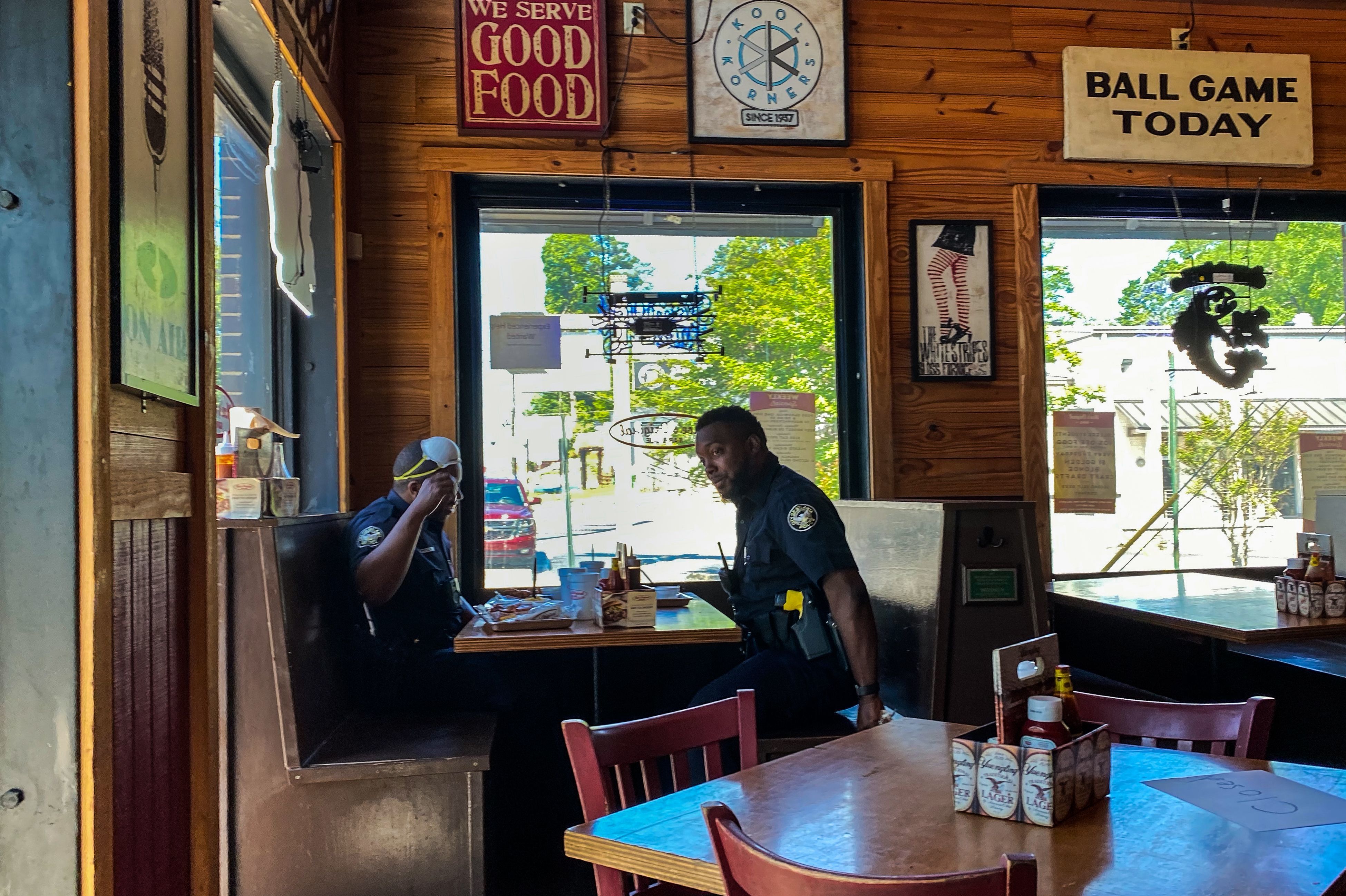
In fact, data from Johns Hopkins University shows that cases of COVID-19 in a number of states are on the rise. Meanwhile, the University of Washington’s Institute for Health Metrics and Evaluation’s new model says that nearly 135,000 people will have died from COVID-19 by Aug. 4. That’s more than double the last model and takes into consideration the easing of restrictions. As of Saturday morning, more than 77,000 people have died in the United States.
Some states like California are taking so-called baby steps to reopen: allowing curbside pickup at some nonessential shops like florists and the opening of some outdoor recreation. Gov. Gavin Newsom left it up to counties to decide whether to ease the restrictions in accordance with his order.
Other states are leaping. For instance, in Georgia residents can get a tattoo.
“Simply opening up the state doesn’t mean that everyone gets to walk around like they did back in February,” said Dr. Sandra Elizabeth Ford, the district health director for Dekalb County in the Atlanta metro area. “Our messaging has got to be consistent: that there is a new normal. And while we’re open, we won’t be able to be open the way we were open before.”
Georgia Gov. Brian Kemp’s executive orders supersede all local rules. So the only thing Ford said her team can do is communicate their own recommendations. The county is distributing masks and hand sanitizer to people who might not be able to get it for themselves.
“We’re trying to talk about equitable reentry because it’s not just about opening up the state, but we want to open up the state in a way that is equitable,” Ford said. “Make sure that folks who have hourly jobs, for example, that must report to work and have probably reported to work the whole time, are still provided options to be tested, options to have appropriate protective wear and opportunity, if needed, to be quarantined off site.”
Systemic problems
In Dekalb County, people speak some 90 languages and dialects. Also, it’s majority African American. Data show that black and brown communities have been disproportionately impacted by COVID-19. Ford said that’s because of long-standing disparities in access to health care.
“This is an event, but the issues that contribute to the overabundance [of coronavirus infections] in people of color is systemic,” she said. “And so for us to not take advantage of this pandemic and try to change some systemic issues would be a waste.”
The county has mapped out cases by ZIP code and is ramping up testing in hard-hit areas. It’s also providing information about resources for mental health services, domestic abuse or the Paycheck Protection Program. Meanwhile the county is working to ramp up its ability to contact trace.
Dallas County in Texas has stood up a team of infectious disease experts, epidemiologists and others scientists so that local decisions are based on science.
The message to county residents:
“Just because you can do something, doesn’t mean you should,” said Philip Huang, director of Dallas County Health and Human Services.
Local leaders can only make recommendations. The second phase of Texas’ reopening began on Friday after Gov. Greg Abbott issued an executive order expanding the types of businesses that can welcome customers again. Now, not only can residents go to a movie theater or a mall, as long as the businesses limit the number of customers according to the executive order, but they can also use a tanning bed or get their hair cut at a salon.
“I can’t contradict the governor’s orders. So when there are areas where we can provide additional clarification and sort of guidance, then that’s what we’re trying to do,” Huang said. “We’re trying to make these recommendations for our own local community based on what we’re seeing here.”
What the officials want to see is two weeks of decreases in cases before these businesses open up. They have not seen that in Huang’s county;, instead, cases actually went up in the past week.
“There are some areas of Texas that might have no cases. We’ve got more than 5,000. So things are a little different here,” Huang said. “What we’re trying to do is use this expert committee to really make recommendations based on the science. So we say, ‘Even though you can, here’s what the experts recommend in terms of going to get that haircut.’ ”
Right now, public health experts recommend that you don’t.
9(MDAzMzI1ODY3MDEyMzkzOTE3NjIxNDg3MQ001))


![CoronavirusPandemic_1024x512[1]](https://whyy.org/wp-content/uploads/2020/03/CoronavirusPandemic_1024x5121-300x150.jpg)
